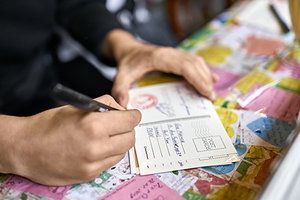Whether you accept it, avoid it or live somewhere in between, insurance coverage has become a defining issue for our profession. Patients increasingly expect to use their benefits, practitioners want to be compensated fairly for their time and expertise, and the system itself remains – at best – fragmented. The encouraging news is that coverage has expanded in meaningful ways. The challenging news is that reimbursement, across the board, remains inadequate.
Postcard Marketing on a Shoestring Budget
Out of all the possible ways to market your services and reach a new audience via the mail, postcards are the most effective. Even though marketing has shifted to digital media, snail mail and physical paper have not become obsolete and in fact are quite the novelty! They are inexpensive to produce, not bulky, and can display your message quickly.
Getting Started
Now that you've decided to launch a postcard marketing campaign, there are some key steps to follow in order to maximize your ROI. Fortunately, your budget won't have to take a big hit. With proper planning and execution, the money spent can result in great returns.
Step #1: Determine Your Budget
Your budget will be dependent on your list size. You can use a zip-code-based list or your current database. Designate a certain amount of money for postcard marketing, which must cover designing, printing, and distribution through the post office (USPS). Approach different vendors for quotes and examine different options until you find a plan that works for you and your budget. Some companies can print and mail all in one – such as VistaPrint; so investigate that as a comprehensive option. Once you have a finalized budget, you can begin the more intricate parts.
Step #2: Determine Your Goals

What are you trying to accomplish with the postcard campaign? Are you trying to advertise a new line of service like lasers? Are you trying to gain first-time appointments from a certain demographic? Are you starting a new service such as nutrition that you want your patients to know about?
Maybe you are just trying to increase your visibility. For example, if you are trying to gain referrals, you can place an incentive, such as a discount on a product or service, for your current patients if they refer their family and friends to your practice.
You always want to tell the recipient what you want them to do based on your goals. Your goal = your marketing message.
Step #3: Design Your Postcard
Third, you get to design the postcard. You can design it yourself using online tools such as Canva, or hire a graphic designer or marketing professional. It's important you have an idea of what you want and it should match your brand.
When most people think of a postcard, a generic piece of cardstock with different images comes to mind. However, your postcard can be so much more. Postcards are becoming increasingly customizable, and you can use this to your advantage to make your marketing campaign more effective, because the postcard will stand out more to the recipient.
For example, you can use vivid and bright colors to grab the reader's attention and display your message. Include pictures as a tool to tell your story. Remember the old adage that a picture is worth a thousand words.
One way to give your postcard an edge is to use a half-fold card. This allows you to put double the information as a regular card or have space to increase the font size so your message stands out. Best of all, the USPS rates are the same as a regular postcard. If you want even more space, you can opt for a trifold format, giving you the design of a brochure in a postcard form.
For the design itself, you can try adding a rounded edge for a cleaner look, or perforations with tear-off features to motivate your target audience even more. Your design must catch the reader's eye and push them to "flip" or "open" your direct-mail piece to learn more.
Another fantastic tool to use when launching a postcard campaign is Every Door Direct Mail (EDDM). This is a great option to promote your business in your area. You can even use an online tool to filter for certain demographics using census data on the USPS website. EDDM is the most affordable option, making it extremely cost-effective for those on a shoestring budget.
Step #4: Make a Sending Schedule
All you need to do now is determine a sending schedule. To save money, you won't want to send them out too often, but remember that repetition is important! The minimum we recommend is once every approximately three weeks or six in the span of four months. However, you want to make sure your customers don't ignore frequent postcards. A solution to this can be to personalize your message even more.
Finally, watch the referrals and responses flood into your business or practice! Indeed, you can launch a successful postcard campaign on a tight budget. Remember to decide on a budget, pick your goals, design a personalized postcard broadcasting your message, and then decide on a final schedule. Following those steps, you have now launched a postcard marketing campaign.



